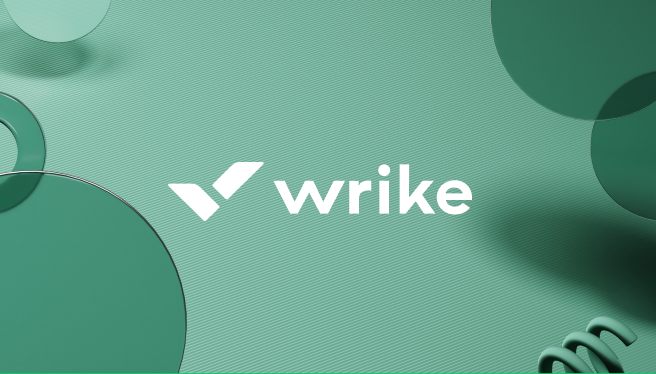Project Management
7 min read
A Quick Guide to The Linear Scheduling Method
A linear schedule is a project management tool used to present a schedule in two dimensions, such as time and distance. This is normally used for projects with linear construction properties or repetitive tasks, such as the construction of roads, bridges, and railways.
In this article, we will explain what the linear scheduling method is, how it benefits projects, and how to execute it. Keep reading to discover linear scheduling examples and tools you can use to perfect your next project plans.
Linear scheduling method explained
The linear scheduling method is a process for developing project schedules that take into account the various elements of a work that are linear, continuous, or repeated. Most commonly used in construction management and engineering, the quantity of work performed on a project is used to determine the duration of a work relationship and the work rates for each crew member.
Although the term “linear scheduling” is often used to describe the steps involved in preparing linear schedules, it can also be referred to as the development of a graphical representation of a project schedule.
You may also hear the linear scheduling method referred to as “time chainage” or “line-of-balance”.
The various elements of the linear schedule are represented on a grid with coordinates that define when and where the work begins and finishes. A range of display methods is also used to present the varying activities in different formats.
What benefits does a linear schedule provide to a project manager?
The linear scheduling method is simple. Not only is it easier to read, but it’s also easier to organize.
It’s helpful for communication. Contractors, stakeholders, and clients can understand your project plans from this information alone. It covers everything they need to know about what’s needed, where and when the work will take place, and how productive the work will be.
Linear scheduling mitigates risk. Project managers can easily monitor and report on the various activities that occurred during the execution phase. Even if unforeseen circumstances happen during the execution phase, this can be easily revisited to improve the project's productivity using this method.
It’s flexible. The time-location chart is useful for extending project benchmarks as needed because it provides a list of the factors that can affect the project's schedule, so you know what to expect.
The linear scheduling method helps inform decision-making. This method helps the project manager identify and take action on the lapses that occurred during past projects. It also helps with preventing them from happening again.
It uncovers task dependencies. A time-location diagram is a great tool to visualize the various interrelated activities in a project. It can help you understand the sequence of activities and their importance. For example, in construction, the arrival of material at a site may cause delays in the mobilization of heavy equipment, resulting in costly downtime if not forecasted.
Which industries use linear scheduling?
Linear scheduling is most commonly used in the construction industry for straightforward projects such as standard pipelines, highways, and railroads. However, any industry with projects that have linear continuous and repetitive tasks can take advantage of this method. It’s also effective for managing compliance and continuity across repeat projects.
Linear scheduling method in construction management
For construction management, this method involves repeatedly running a set of projects in each location for the duration of the work. Some examples of prominent projects that use this method include highway construction and airport runway projects. One of the most important factors involved in planning a linear construction project is ensuring that the work of the crew does not interfere with the activities of other workers.
It’s important to note that traditional planning and scheduling techniques commonly used for linear construction projects do not account for the various factors that affect the planning and scheduling of such projects. Other methods, such as line-of-balance and vertical production methods, are often used to improve the planning and scheduling techniques for linear construction projects.
Linear scheduling examples
Tunnel construction with the linear scheduling method
[caption id="attachment_471943" align="aligncenter" width="772"] Source: James Wonneberg, PE, CCM via Slideshare[/caption]
The x-axis depicts the location between the two main construction points of this project. The y-axis represents the time period over which the work will take place. Project phases are color-coded in orange, blue, green, and red for easier interpretation.
Notice how each of the tasks is associated with location and time.
For example, during Q2 of 2017, tunnel site 10+00 will be prepped. Then, in Q3 of 2017, tunnel site 10+00 will be constructed while tunnel site 110+00 is prepped.
Not only is this easy to understand at a glance, but it also gives individual team leaders a solid understanding of expectations, deadlines, and tasks that need to be completed by their group.
Building a road with the linear scheduling method
[caption id="attachment_471949" align="aligncenter" width="801"] Source: Columbia University[/caption]
In this linear scheduling method example, “A” represents the beginning of the road, and “E” represents the end of the road. The lettered segments each represent a different section of the road that will be built in order. The numbered bars correspond with a different repetitive process associated with this example road’s construction, such as prepping the site and pouring concrete.
As you can see, each road segment will repeat the same set of repetitive tasks. After tasks one and two are completed on road section A, section B begins the same list, and the pattern continues onward.
This super simplistic model may need a corresponding document to explain the task lists and locations, but it does visualize the big-picture aspects of the project while also being actionable.
Why choose Wrike as your linear scheduling software?
Wrike is a project management tool designed to streamline repetitive tasks and maximize productivity. Once you have your linear schedule in place, you can effectively execute it with Wrike using our Recurrent Tasks, Project Schedule Template, and Automation Engine features.
With Recurrent Tasks, project managers can easily create and duplicate tasks assignments complete with estimated timelines, important details, and assigned team members or approvers. And when you opt for recurrent tasks to be created monthly or yearly on a specific day of the month, you can choose to automatically reschedule the task if this day turns out to be a weekend which saves time you would spend combing through calendars to triple check dates.
In Wrike, the Project Schedule Template gives managers the ability to duplicate project plans from previous engagements. Not only does this save time, but it also ensures that projects remain compliant. And if you need to customize any of the details, Wrike makes it easy to do so.
And finally, Wrike’s Automation Engine automatically updates and simplifies processes. It works seamlessly with existing rules to enable users to easily modify and streamline their actions. It also notifies when project obstacles appear and manages your team's timeline with custom reminders and notifications about overdue tasks, task dependencies, and when it’s time to move on to the next step.
Ready to maximize the power of the linear scheduling method? Get started with Wrike’s two-week free trial.





